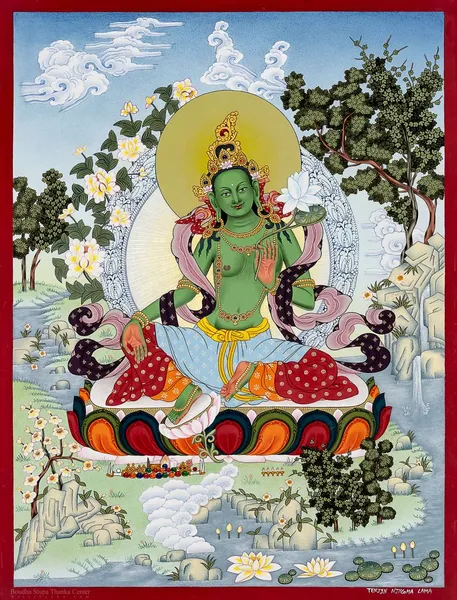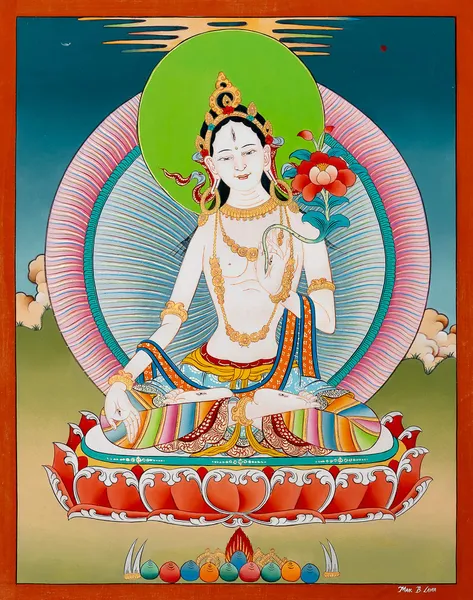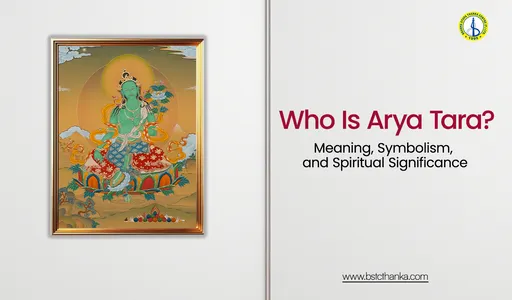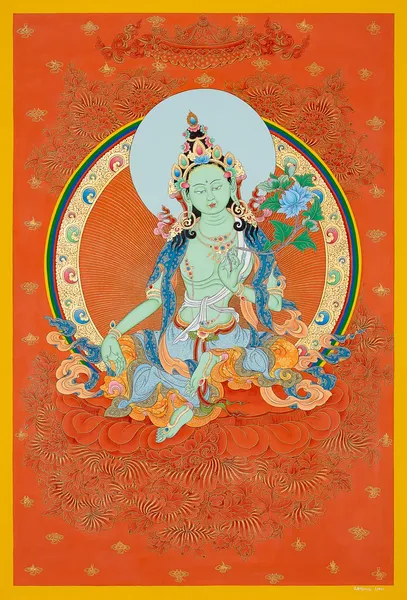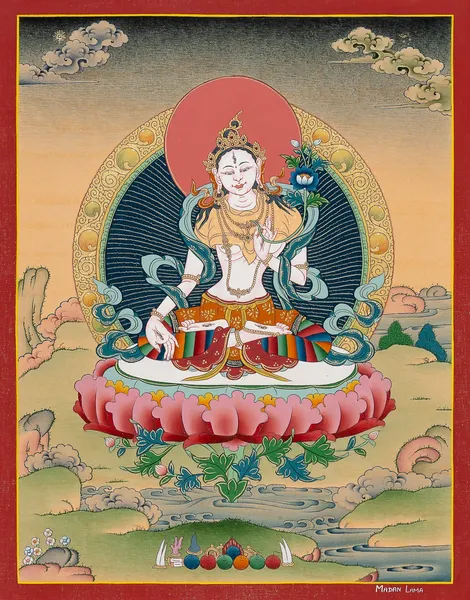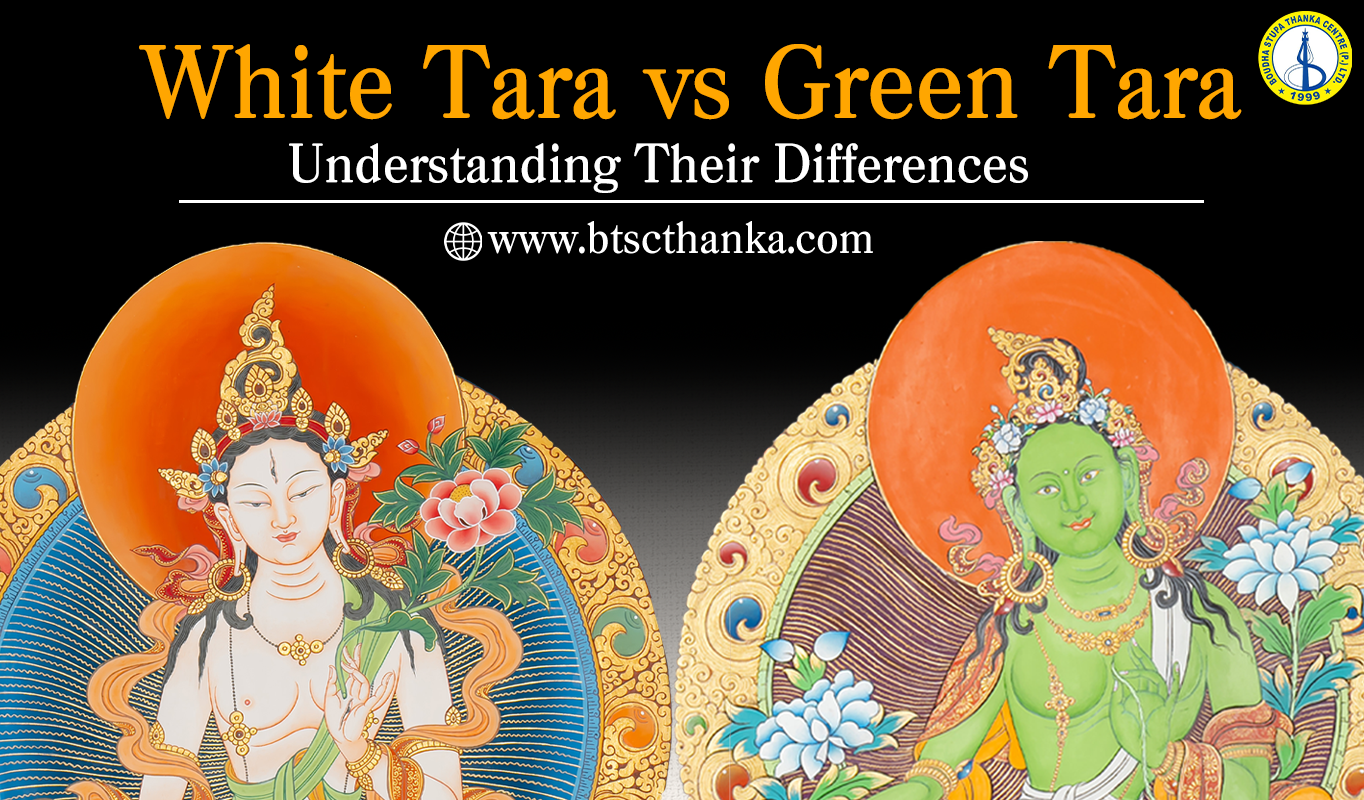
White Tara vs. Green Tara: Understanding Their Differences
Introduction to Tara in Buddhism
Tara is one of the most revered deities in Tibetan Buddhism, embodying compassion, wisdom, and the power to help beings overcome obstacles. Known as the "Mother of Liberation," Tara manifests in multiple forms, with White Tara and Green Tara being the most prominent. Each form carries distinct attributes and blessings, guiding practitioners toward enlightenment in unique ways. This article explores the differences between White Tara and Green Tara, their symbolism, and how to choose the right Tara for your spiritual practice.
Symbolism of White Tara
White Tara is associated with longevity, healing, and compassion. She is often depicted as a peaceful deity, seated in a meditative pose with seven eyes—two on her face, one on her forehead, and one on each palm and sole of her feet. These seven eyes symbolize her ability to see the suffering of beings in all directions, reinforcing her role as a protector and nurturer.
Attributes of White Tara:
-
Healing and Longevity: White Tara is called upon for physical and spiritual healing, making her especially significant in practices aimed at health and long life.
-
Seven Eyes: The extra eyes represent her omniscient wisdom and ability to perceive suffering beyond the physical realm.
-
Lotus and Mudras: White Tara holds a lotus, signifying purity, and her hands often form the varada mudra (gesture of giving) and abhaya mudra (gesture of fearlessness).
-
White Color: Her white color signifies purity, serenity, and the ultimate truth of Dharma.
-
Tara Thangkas: White Tara Thangkas serve as sacred representations of her healing energy, making them valuable tools for meditation and devotion.
-
Association with Health: White Tara’s practice is particularly helpful for overcoming illnesses and promoting inner peace and resilience.
Practitioners invoke White Tara’s blessings through meditation and recitation of her mantra: "Om Tare Tuttare Ture Mama Ayuh Punya Jnana Pustim Kuru Svaha." This mantra is believed to enhance vitality, remove physical ailments, and strengthen spiritual well-being.
Symbolism of Green Tara
Green Tara, in contrast, represents active compassion and swift intervention in times of need. She is known as the goddess of protection, ready to respond to the cries of beings suffering in samsara (the cycle of birth, death, and rebirth). Green Tara is depicted in a dynamic posture, with one foot extended, indicating her readiness to act.
Attributes of Green Tara:
-
Protection and Swift Action: Green Tara is known for her ability to eliminate fear, obstacles, and dangers, making her a powerful guide for those facing difficulties.
-
Dynamic Posture: Unlike White Tara, who remains in a meditative pose, Green Tara’s open stance reflects her proactive nature.
-
Hand Gestures: Her right hand forms the varada mudra, symbolizing generosity, while her left hand is in the vitarka mudra, representing wisdom.
-
Green Color: Green symbolizes vitality, energy, and the interconnectedness of all beings in the universe.
-
Tara Thangkas: Green Tara Thangkas capture her swift, compassionate energy, making them ideal for practitioners seeking courage and divine intervention.
-
Association with Fearlessness: Green Tara is particularly revered by those facing life’s uncertainties and seeking strength in adversity.
Green Tara’s mantra, "Om Tare Tuttare Ture Soha," is frequently chanted to invoke her immediate assistance in overcoming fear, challenges, and dangers. Her presence is said to remove both external and internal obstacles, fostering courage and resilience in practitioners.
Choosing the Right Tara for Your Practice
Selecting between White Tara and Green Tara depends on the specific needs of your spiritual journey. While both emanate compassion, their functions align with different aspects of practice:
-
For Healing and Longevity: White Tara is the ideal choice for those seeking physical and spiritual healing, longevity, and inner peace.
-
For Protection and Swift Assistance: Green Tara is the preferred deity for those needing immediate help, courage, and the removal of obstacles.
-
For a Balanced Practice: Some practitioners integrate both Taras into their spiritual practice to balance wisdom and action.
-
Tara Thangkas for Meditation: Incorporating Tara Thangkas into one’s meditation space can enhance devotion and concentration. White Tara Thangkas radiate serenity and healing energy, while Green Tara Thangkas inspire action and confidence.
-
Spiritual Meaning of Tara: White Tara symbolizes longevity and wisdom, whereas Green Tara embodies fearless compassion and dynamic energy. Understanding the spiritual meaning of Tara helps practitioners align with the right form for their personal growth.
-
Daily Devotion and Rituals: Devotees often set up altars featuring Tara Thangkas to cultivate a deeper connection with Tara’s divine blessings.
-
Tara in Buddhist Tradition: The spiritual meaning of Tara extends beyond personal benefits; she represents the nurturing aspect of enlightened wisdom that aids all sentient beings.
The Role of Tara Thangkas in Spiritual Practice
Tara Thangkas are intricate paintings that capture the divine essence of White Tara and Green Tara. These sacred artworks are not merely decorative; they serve as focal points for meditation and devotion. Traditional Tara Thangkas are meticulously hand-painted using natural pigments, ensuring they carry spiritual energy and authenticity. Practitioners often place these Thangkas in their meditation spaces to facilitate a stronger connection with the goddess.
White Tara Thangkas are often placed in areas dedicated to healing and longevity practices. They exude a calming energy that enhances meditation, allowing practitioners to invoke White Tara’s blessings effectively.
Green Tara Thangkas, on the other hand, are frequently positioned in spaces where protection and active engagement with life’s challenges are needed. The vibrant green hues serve as a reminder of her swift and compassionate intervention.
Incorporating a Tara Thangka into one’s spiritual routine helps create a sacred atmosphere that supports meditation, prayer, and personal transformation.
Conclusion
Understanding the differences between White Tara and Green Tara helps deepen one's spiritual connection and practice. White Tara embodies the nurturing, healing aspect of Tara, while Green Tara represents dynamic compassion and immediate intervention. Whether seeking longevity, healing, protection, or swift action, Tara offers boundless blessings. By incorporating Tara Thangkas and mantra recitation into your practice, you invite her divine energy into your life, fostering wisdom, peace, and transformation.
Through deepening one's understanding of the spiritual meaning of Tara, practitioners can make more informed choices in their devotion. Both White Tara and Green Tara offer distinct yet complementary qualities, ensuring that all practitioners, regardless of their spiritual needs can find guidance, protection, and enlightenment on their path.
By using Tara Thangkas in meditation, reciting their sacred mantras, and aligning with the energy of either White Tara or Green Tara, devotees can cultivate an enriching spiritual practice that enhances their personal growth and connection to the divine. These divine forms of Tara continue to inspire and guide practitioners toward enlightenment, ensuring their journey is filled with wisdom, compassion, and unwavering support.
Related Products
